Did you know that the habanero pepper, also known as the Capsicum chinense, ranks among the hottest chili peppers in the world? With its intense heat and explosive flavor, this spicy pepper has gained popularity among adventurous food enthusiasts and seasoned chefs alike.
From adding a fiery kick to your favorite recipes to reaping the health benefits it offers, habanero peppers are a versatile ingredient that can take your taste buds on a thrilling gastronomic journey. In this comprehensive guide, I will share tips and insights on everything you need to know about cooking with habanero peppers, growing your own plants, and unlocking their immense flavor potential.
Key Takeaways:
- Habanero peppers are one of the hottest chili peppers in the world, known for their intense heat and explosive flavor.
- They can spice up your favorite recipes and add a burst of flavor to dishes.
- Growing your own habanero peppers allows you to enjoy fresh, homegrown spice in your cooking.
- Habanero peppers offer potential health benefits, such as boosting metabolism and providing antioxidants.
- With proper handling and safety precautions, you can explore the diverse cooking techniques and flavor pairings that complement habanero peppers.
Understanding the History and Origin of Habanero Peppers
The habanero pepper, scientifically known as Capsicum chinense, has a fascinating history and a long-standing culinary significance. This fiery pepper has its origins deeply rooted in the Yucatan Peninsula of Mexico, where it was originally cultivated by the Mayans and the Aztecs.
The Mayans and the Aztecs revered the habanero pepper not only for its intense flavor but also for its medicinal properties. They believed that it possessed healing powers and used it in traditional medicines. The habanero pepper became an integral part of their cuisine, adding a fiery kick to dishes and enhancing their flavors.
Today, habanero peppers are widely cultivated not just in Mexico but also in many other countries around the world. Its popularity has spread due to its unique taste and spiciness, which has captured the attention of chefs and food enthusiasts alike. The habanero pepper has become a staple ingredient in various cuisines, adding a bold and vibrant element to dishes.
Habanero Pepper Cultivation and Culinary Significance
The cultivation of habanero peppers requires suitable conditions such as warm climates and well-drained soil. Mexico continues to be one of the largest producers of habanero peppers, with different regions within the country specializing in their cultivation. The Yucatan Peninsula, with its fertile soil and favorable climate, remains a hub for habanero pepper production.
From Mexico, habanero peppers made their way to other parts of the world, including the Caribbean, Central America, and various regions in South America. Today, you can find these fiery peppers in cuisines across the globe, from spicy salsas and sauces to mouthwatering marinades and bold meat dishes.
“The habanero pepper has a unique ability to bring both heat and flavor to a dish. Its distinctive fruity and tropical notes make it a versatile ingredient in many cuisines.”
The Significance of Habanero Peppers in Mexico
Habanero peppers hold immense cultural and culinary significance in Mexico. They are not only a key part of traditional Mexican dishes but are also deeply ingrained in the country’s cultural heritage. These peppers are celebrated during festive occasions and feature prominently in Mexican street food.
| Mayans | Aztecs |
|---|---|
| The Mayans highly valued habanero peppers and used them in cooking and traditional medicine | The Aztecs believed that habanero peppers had supernatural powers and used them in religious ceremonies |
The habanero pepper has become a symbol of Mexican cuisine, representing its bold flavors and the passion of its people. It continues to inspire chefs and home cooks to experiment with its intense heat and fruity flavor, adding an exciting element to their creations.
Now that we understand the history and origin of habanero peppers, let’s delve deeper into their unique characteristics and flavor profile in the next section.
Exploring the Characteristics and Flavor Profile of Habanero Peppers
Habanero peppers are truly unique when it comes to their flavor and characteristics. While they are widely known for their intense heat, there’s much more to these fiery peppers than meets the eye. Let’s dive into the fascinating world of habanero peppers and unlock their secrets.
Intense Heat and Scoville Scale
When it comes to heat, habanero peppers are some of the hottest peppers out there. They rank high on the Scoville scale, which measures the spiciness of chili peppers. In fact, habaneros typically range from 100,000 to 350,000 Scoville Heat Units (SHU), making them significantly hotter than jalapeno peppers. It’s important to handle them with care and enjoy them in moderation if you’re not accustomed to spicy foods.
Amping Up the Flavor
But habanero peppers aren’t just about heat. They also offer a unique and complex flavor profile that sets them apart from other chili peppers. These peppers are famous for their fruity taste, with hints of tropical notes like citrus and mango. The combination of intense heat and fruity flavor makes habanero peppers a standout ingredient in various dishes, adding depth and excitement to your culinary creations.
Whether you’re looking to create a spicy salsa or add a kick to your favorite curry, habanero peppers bring an irresistible flavor that’s hard to resist. Just a touch of these peppers can transform an ordinary dish into an extraordinary culinary experience.
Habanero Peppers: A Journey of Taste
When I think of habanero peppers, I imagine a vibrant dance of flavors on my palate. The initial burst of heat quickly gives way to a delightful medley of fruity and tropical notes. The citrusy tang and slight sweetness take the fiery intensity to new heights, creating a taste sensation like no other.
So, if you’re ready to embark on a flavor-packed adventure, don’t shy away from habanero peppers. Embrace their intense heat and savor the intricate balance of flavors they offer. Whether you’re a spice lover or looking to challenge your taste buds, habanero peppers are sure to leave you craving for more.
Understanding the Scoville Scale and Heat Levels of Habanero Peppers
Habanero peppers are known for their intense heat and fiery flavor. To understand their spiciness, we turn to the Scoville scale, a measure of chili pepper heat. On this scale, habanero peppers rank high, ranging from 100,000 to 350,000 Scoville Heat Units (SHU). Just to put it into perspective, jalapeno peppers typically measure around 2,500 to 8,000 SHU.
The heat of habanero peppers is attributed to a compound called capsaicin, which stimulates the heat receptors in our mouths, resulting in that characteristic spiciness. The higher the concentration of capsaicin, the hotter the pepper will be.
It’s important to be cautious when cooking with habanero peppers, as their heat level can vary depending on various factors such as the variety and growing conditions. It’s always a good idea to start with a small amount when experimenting with habaneros, and gradually increase the quantity to suit your tolerance for heat.
Comparison of Heat Levels
To illustrate the wide range of heat levels, let’s compare habanero peppers to another popular chili pepper, the jalapeno.
| Habanero Pepper | Jalapeno Pepper |
|---|---|
| 100,000-350,000 SHU | 2,500-8,000 SHU |
As you can see, habanero peppers pack a much higher heat level compared to jalapeno peppers. It’s important to keep this in mind when incorporating habaneros into your recipes.
So, if you’re looking to add a fiery kick to your dishes, habanero peppers are a perfect choice. Just remember to handle them with caution, wear gloves if necessary, and adjust the quantity to your preference for the ultimate spicy experience.
Selecting and Handling Fresh Habanero Peppers
When it comes to selecting fresh habanero peppers, there are a few key factors to consider. By choosing the right peppers and handling them properly, you can ensure that your dishes are packed with spicy flavor. Here are some tips for selecting and handling fresh habanero peppers:
Choosing Fresh and Flavorful Peppers
- Look for habanero peppers that are firm, smooth, and free from blemishes. Avoid peppers that have wrinkled skin or soft spots.
- Size can be an indication of heat level, with smaller peppers typically being hotter. If you prefer a milder spice, opt for larger habanero peppers.
- Consider the color of the habanero peppers. While most are orange, you can also find red, yellow, and even chocolate habanero peppers. The color does not impact the spice level.
- Squeeze the peppers gently to check for firmness. They should have a slight give, but not feel overly soft or mushy.
Storing and Freezing Habanero Peppers
Properly storing habanero peppers can help maintain their freshness and extend their shelf life. Here are some recommendations:
- Store fresh habanero peppers in a cool, dry place, such as the refrigerator. Wrapping them in a paper towel or storing them in a breathable container can help prevent moisture buildup.
- Avoid storing habanero peppers near other fruits and vegetables, as their strong scent can be absorbed by neighboring produce.
- If you have an abundance of habanero peppers, freezing them is a great option for long-term storage. Simply wash, dry, and freeze the peppers whole or chopped. They can be frozen in airtight containers or freezer bags for up to six months.
Handling Habanero Peppers Safely
“Habanero peppers can pack a punch, so it’s important to handle them safely to avoid any discomfort. Here are some safety precautions to keep in mind:”
- Wear gloves when handling habanero peppers to protect your skin from the potent capsaicin. Avoid touching your face or eyes while handling the peppers.
- After handling habaneros, thoroughly wash your hands with soap and water to remove any lingering capsaicin and avoid accidentally transferring it to sensitive areas.
- If you prefer a milder spice, remove the seeds and membranes from the habanero peppers. The majority of the heat resides in these parts.
By carefully selecting and handling fresh habanero peppers, you can unlock their fiery flavor and incorporate them into your favorite recipes with confidence.
Handling and Preparing Habanero Peppers Safely
Habanero peppers are notorious for their intense heat, making it crucial to handle and prepare them with care. Follow these safety measures to ensure a safe and enjoyable experience when working with habaneros.
1. Wear Gloves
When handling habanero peppers, it’s highly recommended to wear gloves to protect your hands from the potent capsaicin, the compound responsible for the pepper’s heat. This will prevent any accidental contact with sensitive areas of your skin, such as your eyes or face.
2. Thoroughly Wash Your Hands
After handling habanero peppers, it’s essential to wash your hands thoroughly with soap and water. This will remove any lingering capsaicin residue and prevent accidental transfer to other surfaces or your skin. Avoid touching your eyes or face until your hands are completely clean.
3. Reduce the Heat Level
If you prefer a milder taste, you can reduce the heat level of habanero peppers by removing the seeds and membranes. These are the parts of the pepper that contain the highest concentration of capsaicin. Simple techniques like cutting the pepper in half and scraping out the seeds and membranes can help temper the heat.
4. Exercise Caution
Always remember to handle habanero peppers with caution, even after removing the seeds and membranes. The oils from the pepper can remain on your hands, so avoid touching your face or other sensitive areas. This will prevent any potential skin irritation or accidental ingestion of capsaicin.
By following these safety precautions, you can confidently handle and prepare habanero peppers, unlocking their fiery flavor while ensuring a safe cooking experience.
Continue reading to learn more about cooking techniques with habanero peppers.
Cooking Techniques with Habanero Peppers
Habanero peppers are a versatile ingredient that can be used in a variety of cooking techniques to enhance your dishes with their fiery flavor. Whether you prefer the whole peppers or prefer them chopped or minced, there are many ways to incorporate habanero peppers into your culinary creations.
Using Whole Peppers
Using whole habanero peppers is a great way to infuse your dishes with their intense heat and fruity flavor. By adding whole peppers to soups, stews, or sauces, you can impart a bold and vibrant taste that will surely spice up your meal. Just be careful not to overdo it, as habaneros can pack quite a punch!
Chopped or Minced Habanero Peppers
If you prefer a milder heat level with more even distribution, chopping or mincing habanero peppers is the way to go. You can add them to salsas, marinades, or use them as a garnish for an extra kick. The smaller the pieces, the more evenly the heat will be dispersed throughout your dish.
Sautéing Habanero Peppers
Sautéing habanero peppers can help mellow their heat and bring out their smoky, fruity notes. Simply heat some oil in a pan, add the chopped peppers, and cook them for a few minutes until they become soft and fragrant. The sautéed peppers can then be used in stir-fries, pasta dishes, or even as a topping for pizzas.
Grilling Habanero Peppers
Grilling habanero peppers is another fantastic way to add depth and flavor to these fiery peppers. The heat from the grill caramelizes the sugars in the peppers, resulting in a smoky, charred taste. Grilled habaneros can be used in salsas, sauces, or paired with grilled meats for a delicious and spicy twist.
Pairing Habanero Peppers with Other Flavors
Combining habanero peppers with other flavors can create a harmonious balance in your dishes. The natural sweetness of fruits can temper the heat of habanero peppers, while dairy products provide a cooling contrast. Acidic ingredients like lime juice or vinegar can brighten the flavor, and aromatic herbs and spices can enhance the complexity of your culinary creations. Exploring these flavor pairings will enhance your habanero pepper experience.
The Power of Pairing
When it comes to cooking with habanero peppers, finding the right flavors to complement their heat can take your dishes to the next level. By experimenting with different ingredients, you can create a symphony of tastes that will tickle your taste buds.
“The combination of sweet and spicy is a hallmark of many cuisines around the world. The habanero pepper, with its fruity flavor, pairs beautifully with the natural sweetness of fruits.”
Exploring Flavor Profiles
Habanero peppers offer a unique heat and flavor profile. Pairing them with the right ingredients can balance their spiciness and enhance their tropical notes, resulting in a well-rounded dish.
Fruit: The natural sweetness of fruits like mango, pineapple, and peach can help tame the heat of habanero peppers. Incorporating these fruits into salsas, sauces, or marinades can provide a subtle sweetness that complements the spice.
Dairy: Dairy products such as yogurt, sour cream, or cheese can provide a creamy and cooling contrast to the heat of habanero peppers. These ingredients can help to mellow the spiciness and create a delectable balance of flavors.
Acid: Adding acidity to your dishes can brighten the flavors and cut through the heat of habanero peppers. Ingredients like lime juice or vinegar can provide a refreshing tang that enhances the overall taste experience.
Herbs and Spices: Aromatic herbs and spices like cilantro, cumin, and oregano can complement the flavor profile of habanero peppers. These ingredients add depth and complexity to your dishes, making them even more delicious.
Recipes Worth Trying
If you’re looking for some inspiration, here are a few recipes that showcase the art of pairing habanero peppers with other flavors:
- Mango Habanero Salsa: Combine diced mango, habanero peppers, red onion, cilantro, lime juice, and a pinch of salt for a vibrant and spicy salsa that pairs well with grilled meats or tortilla chips.
- Spicy Habanero Pineapple Chicken: Marinate chicken breasts in a mixture of habanero peppers, pineapple juice, garlic, soy sauce, and brown sugar. Grill or bake the chicken to perfection and serve with a side of rice or roasted vegetables for a mouthwatering meal.
- Habanero Lime Shrimp Tacos: Sauté shrimp with diced habanero peppers, garlic, lime juice, and a sprinkle of chili powder. Serve in warm tortillas with avocado, cabbage, and a drizzle of yogurt sauce for a flavorful and satisfying taco experience.
Experimenting with these flavor pairings will unlock a world of possibilities in your habanero pepper kitchen adventures. Whether you prefer the sweetness of fruit, the creaminess of dairy, the brightness of acid, or the complexity of herbs and spices, there’s a perfect combination waiting to elevate your dishes to new heights.
Tips for Safely Eating Habanero Peppers
When it comes to enjoying the fiery flavor of habanero peppers, it’s important to approach them with caution, especially if you’re not accustomed to spicy foods. Here are some tips to ensure a safe and enjoyable eating experience:
Start Slowly
If you’re new to habanero peppers, start by consuming small amounts. Gradually increase your tolerance over time, allowing your taste buds to adjust to the spiciness. Remember, it’s better to start mild and work your way up to a higher spice level.
Handle with Care
When handling habanero peppers, it’s crucial to prioritize safety. The capsaicin in habaneros can irritate the skin and eyes, so it’s recommended to wear gloves while cutting or handling the peppers. Afterward, wash your hands thoroughly with soap and water to remove any lingering capsaicin.
Choose the Right Variety
Habanero peppers come in different varieties, some being hotter than others. If you have a lower tolerance for spiciness, opt for milder habanero varieties. This way, you can still enjoy the flavor without overwhelming heat.
Pair with Dairy Products
If the heat becomes too intense, you can tame the spiciness of habanero peppers by pairing them with dairy products. The proteins in dairy help to neutralize the capsaicin, providing relief from the heat. Consider adding a dollop of sour cream or a sprinkle of grated cheese to your habanero-infused dishes.
Remove Seeds and Membranes
The spiciness of habanero peppers is mainly concentrated in the seeds and membranes. If you prefer a milder taste, remove them before using the peppers in your dishes. This simple step can significantly reduce their heat level while still retaining their unique flavor.
Enjoy in Moderation
While habanero peppers offer a thrilling culinary experience, it’s important to consume them in moderation. Enjoying habaneros as part of a balanced diet allows you to fully appreciate their flavor while avoiding overwhelming spiciness. Remember, a little goes a long way.
By following these safety and flavor-enhancing tips, you can confidently include habanero peppers in your meals and savor their unique taste without compromising on enjoyment or comfort.
Conclusion
Habanero peppers are a fiery and flavorful addition to any dish. Their intense heat and unique taste profile make them a standout ingredient in the culinary world. Understanding how to handle habaneros safely and experimenting with different cooking techniques allows you to fully enjoy their vibrant flavor.
When working with habanero peppers, it’s important to exercise caution and follow proper safety measures. Wearing gloves and thoroughly washing your hands afterward can help prevent any discomfort caused by the spicy capsaicin. Removing the seeds and membranes can also help reduce the heat level if desired.
Incorporating habanero peppers into your cooking opens up a world of possibilities. From adding a kick to salsas and marinades to infusing dishes with their fruity and tropical notes, these peppers bring a burst of excitement to every bite. So, get ready to embark on a spicy and thrilling journey by incorporating habanero peppers into your favorite recipes!

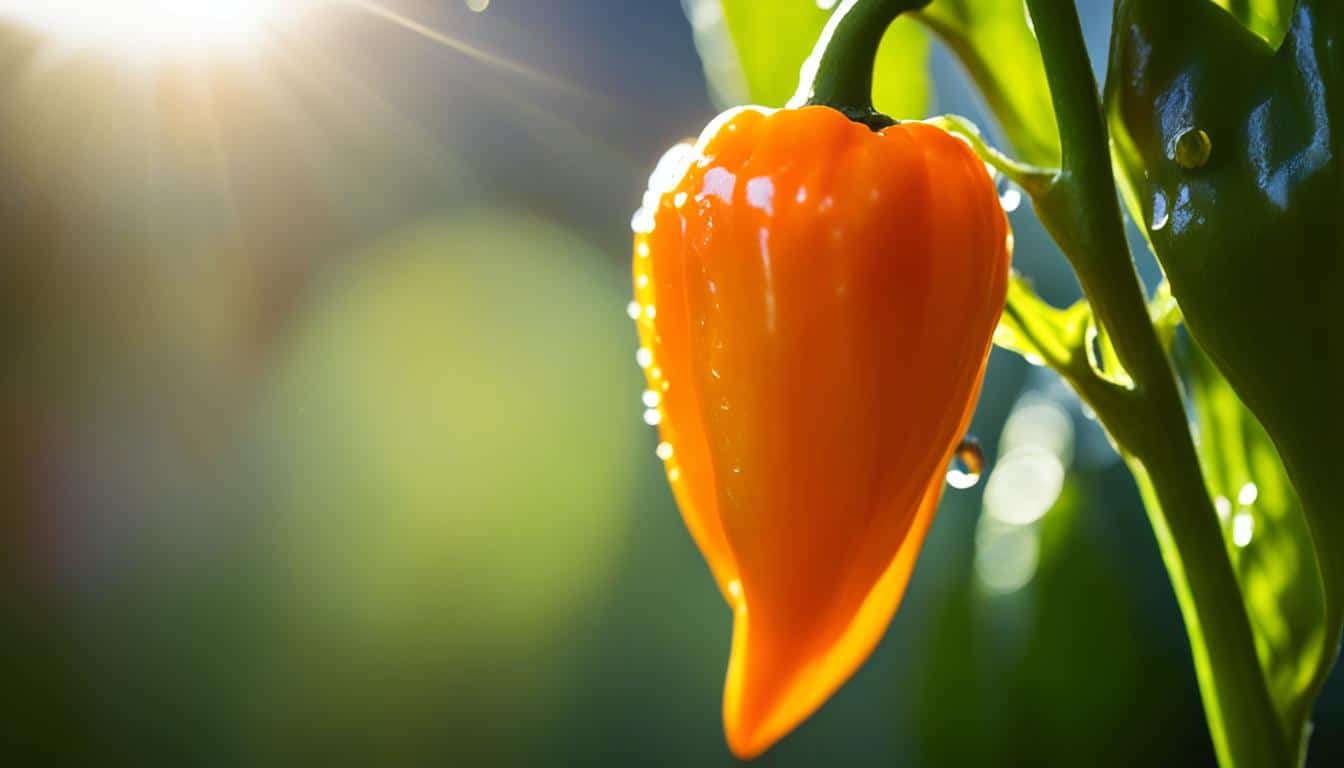
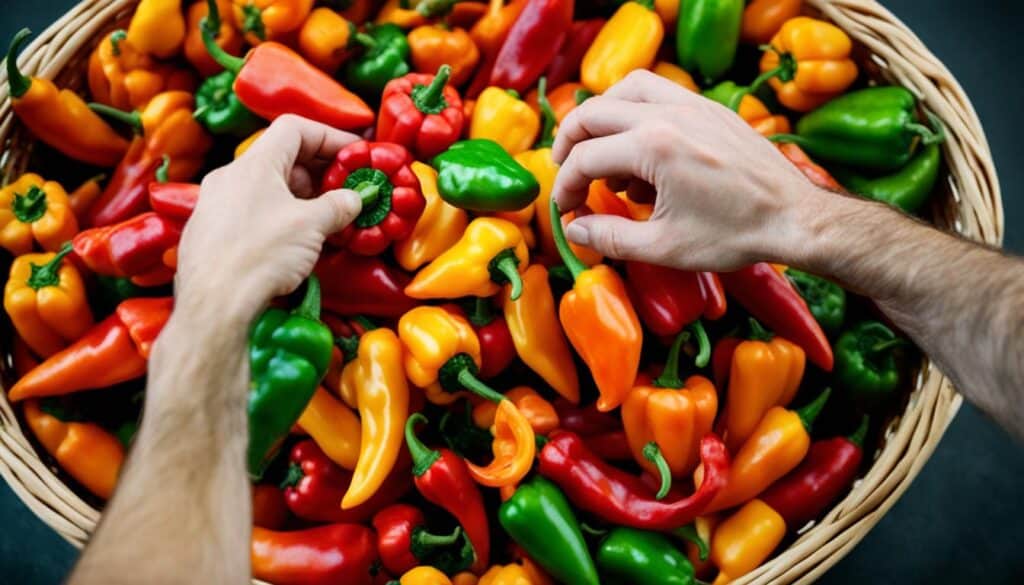
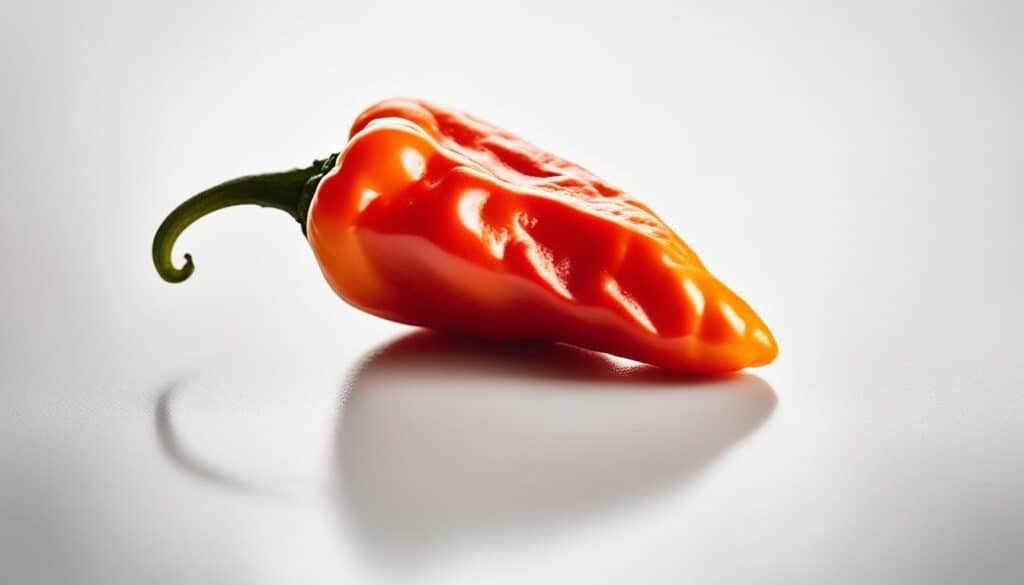

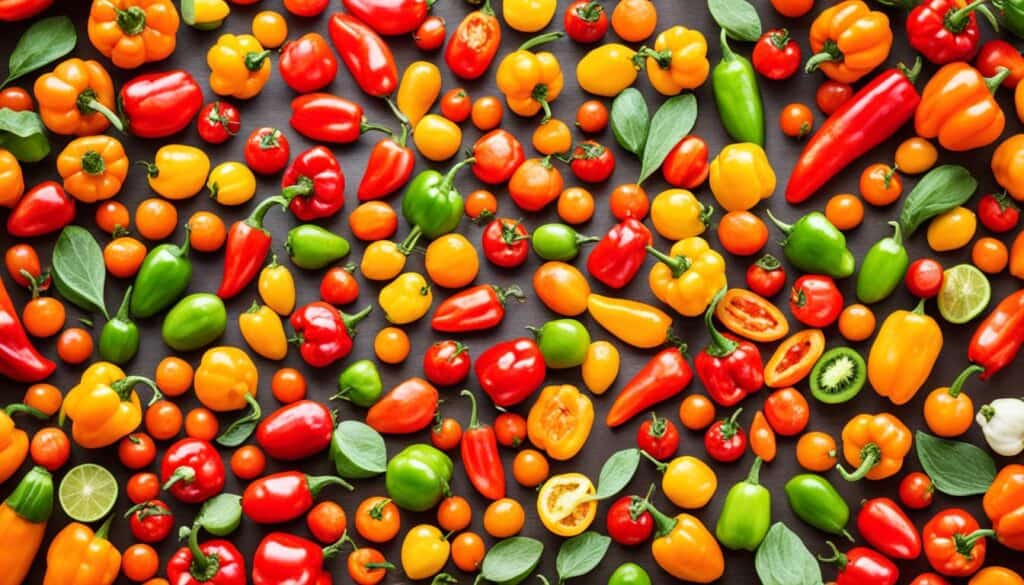
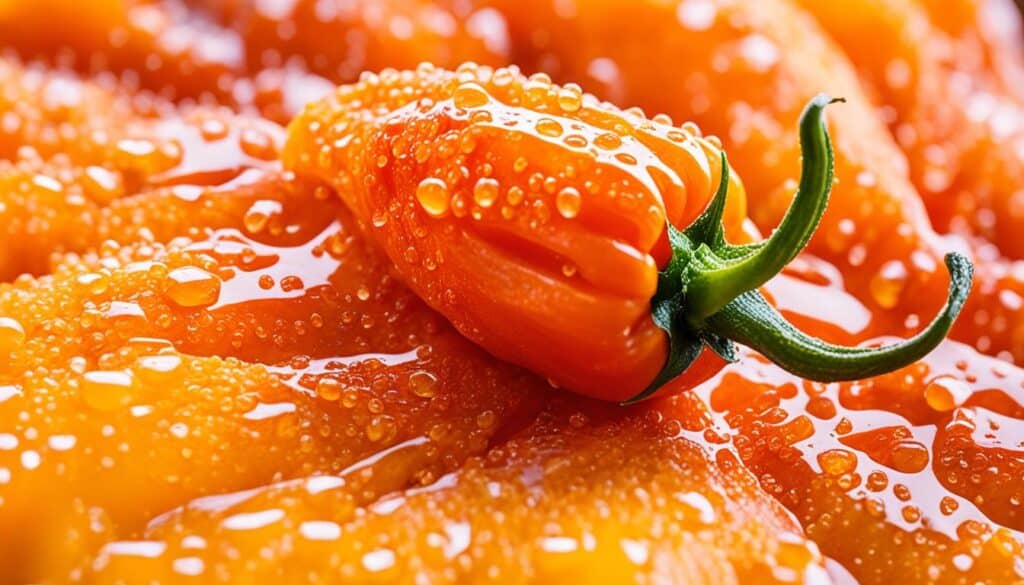



Leave a Reply